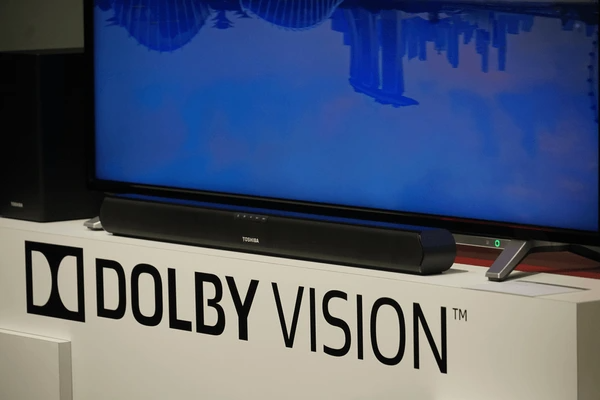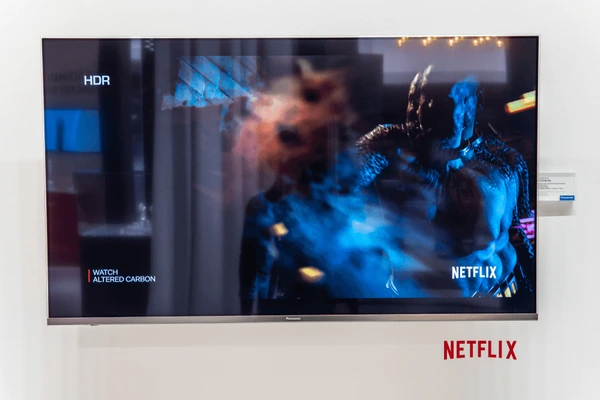
When it comes to watching high-definition movies and TV shows, High Dynamic Range (HDR) technology is essential. It enhances brightness, contrast, and color. The two most popular HDR formats are Dolby Vision vs. HDR10. While both deliver excellent image quality, there are key differences. This article compares Dolby Vision vs. HDR10, highlighting their features, pros, cons, and real-world performance.
What is Dolby Vision?
Dolby Vision is an advanced HDR format created by Dolby. It uses dynamic metadata to adjust brightness, contrast, and color on a scene-by-scene basis. This allows for a more precise and vibrant image.
Key Features of Dolby Vision:
- Dynamic Metadata: Dolby Vision adjusts scene-by-scene for better picture quality.
- 12-Bit Color Depth: It supports 12-bit color, giving smoother gradients and richer colors.
- High Brightness: Dolby Vision can reach up to 4,000 nits of peak brightness.
- Backward Compatibility: Dolby Vision works with HDR10 displays, though without the extra benefits.

Advantages of Dolby Vision:
- Superior Picture Quality: With dynamic metadata, every scene looks its best.
- Wider Color Gamut: The 12-bit color depth ensures more realistic visuals.
- Future-Proof: As TVs and content evolve, Dolby Vision will continue to improve.
Use Cases for Dolby Vision:
- High-End 4K TVs: Available in premium models from LG, Sony, and Vizio.
- Streaming Services: Netflix, Disney+, and Amazon Prime offer Dolby Vision content.
What is HDR10?
HDR10 is the most widely adopted HDR format. It uses static metadata, meaning brightness and contrast are fixed throughout the content.
Key Features of HDR10:
- Static Metadata: HDR10 doesn’t adjust scene-by-scene. It uses a fixed setting across the entire content.
- 10-Bit Color Depth: HDR10 supports 10-bit color, offering better visuals than SDR.
- Peak Brightness: HDR10 typically supports up to 1,000 nits.
Advantages of HDR10:
- Wide Compatibility: HDR10 works with most TVs, streaming devices, and consoles.
- Lower Cost: As an open standard, HDR10 doesn’t require licensing fees.
- Good Picture Quality: It provides better brightness and contrast than standard SDR.
Use Cases for HDR10:
- Mid-Range TVs: Found in models from Samsung, TCL, and Hisense.
- Streaming Services: Platforms like YouTube and Amazon Prime Video support HDR10.
Key Differences Between Dolby Vision and HDR10
| Feature | Dolby Vision | HDR10 |
|---|---|---|
| Metadata Type | Dynamic (adjusts scene by scene) | Static (fixed throughout the content) |
| Color Depth | Supports 12-bit color depth | Supports 10-bit color depth |
| Peak Brightness | Up to 4,000 nits | Up to 1,000 nits |
| Content Support | Available on select platforms (Netflix, Disney+, Amazon Prime) | Supported on nearly all 4K UHD devices and services |
| Hardware Requirements | Found in high-end TVs, premium devices | Common in most TVs, including budget models |
| Cost | Typically found on premium devices | More affordable, open standard format |
Still unsure about whether to go with Dolby Vision or HDR10? Let Eureka Technical Q&A simplify the decision for you! Get expert insights into the key differences—like color accuracy, brightness, and device compatibility—so you can pick the perfect option for the ultimate viewing experience.
Real-World Use Cases and Performance
Dolby Vision in Action:
- 4K UHD TVs: TVs like the LG CX OLED and Sony A90J use Dolby Vision to deliver stunning picture quality with vibrant colors and deep blacks.
- Streaming: Netflix and Disney+ offer Dolby Vision content for ultra-high-definition viewing.
HDR10 in Action:
- Wide Device Support: HDR10 works across almost all 4K TVs, projectors, and gaming consoles.
- Affordable Devices: Budget-friendly models from TCL and Hisense feature HDR10 support.
Which One Should You Choose: Dolby Vision or HDR10?
Your decision depends on your budget, devices, and content preferences.
- Choose Dolby Vision if:
- You want the best HDR performance with dynamic adjustments for each scene.
- You have high-end devices like OLED TVs.
- You stream content from Netflix or Disney+, which supports Dolby Vision.
- Choose HDR10 if:
- You have a lower budget but still want better picture quality than SDR.
- You have devices that only support HDR10.
- You want compatibility across many devices, including budget TVs.

Conclusion
Both Dolby Vision and HDR10 offer enhanced picture quality. Dolby Vision provides superior performance with dynamic metadata and higher peak brightness, while HDR10 is more accessible and compatible with a wider range of devices. Choose based on your viewing habits, budget, and device compatibility.
FAQs
1. Is Dolby Vision worth the extra cost?
Yes, if you want the best HDR experience and have compatible devices, Dolby Vision offers superior picture quality.
2. Can HDR10 work on any 4K TV?
Yes, HDR10 is widely supported across most 4K TVs, including budget models.
3. Do all streaming services support Dolby Vision?
No, not all services support Dolby Vision, but platforms like Netflix, Disney+, and Apple TV+ do.
4. Can I use Dolby Vision on an HDR10-compatible TV?
Yes, but you won’t get the enhanced benefits. The TV will default to HDR10 capabilities.
To get detailed scientific explanations of Dolby Vision vs. HDR10, try Patsnap Eureka.


